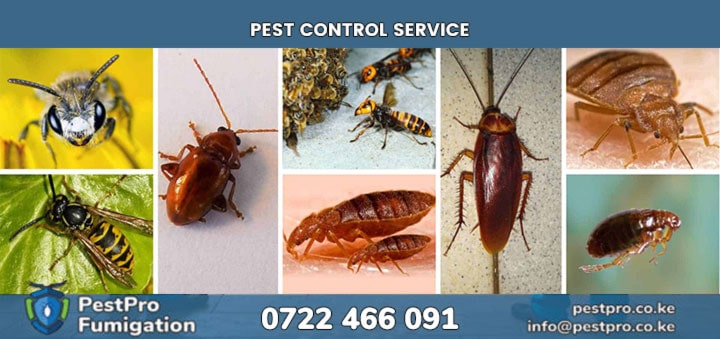Kenya’s tropical climate, characterized by warm temperatures, high humidity, and seasonal rainfall, creates an ideal environment for pests like termites, ants, and borers that can wreak havoc on buildings. Choosing pest-resistant building materials is critical for constructing durable, low-maintenance structures. This article explores natural and treated materials suited for Kenya’s climate, offering insights into their properties, benefits, and practical applications for sustainable construction.
Understanding Kenya’s Climate and Pest Challenges
Kenya experiences a range of climatic conditions, from humid coastal regions to semi-arid interiors. These conditions foster pest proliferation, particularly termites, which thrive in warm, moist environments. According to a 2023 study by the Kenya Forestry Research Institute, termite damage affects over 40% of wooden structures in rural areas. Selecting materials that naturally deter pests or are treated to resist infestations is essential for long-term structural integrity.
Hardwoods with Natural Pest Resistance
Certain hardwoods native to Kenya or regionally available offer inherent resistance to pests due to their density and natural oils. Examples include:
- Mvule (Milicia excelsa): Known for its durability, mvule’s high tannin content repels termites and fungi. It’s commonly used for beams, frames, and furniture.
- Teak (Tectona grandis): Though not native, teak is widely cultivated in Kenya. Its natural oils make it highly resistant to termites and moisture-related decay.
- Mahogany (Khaya spp.): This dense hardwood resists borers and termites, making it ideal for doors, windows, and roofing supports.
These hardwoods are costly but offer longevity, reducing replacement and maintenance expenses. Sourcing from certified sustainable suppliers ensures environmental responsibility.
Did You Know?
A 2022 report by the Kenya Green Building Society noted that using naturally pest-resistant hardwoods can reduce maintenance costs by up to 30% over 20 years compared to softwoods.
Treated Timber for Enhanced Protection
For cost-effective solutions, treated timber is a practical choice. Chemical treatments like borate or copper-based preservatives enhance wood’s resistance to pests and decay. In Kenya, pressure-treated pine is widely used for roofing trusses and structural frames. The treatment process involves impregnating wood with preservatives under high pressure, ensuring deep penetration.
- Benefits: Treated timber is more affordable than hardwoods and widely available. It withstands Kenya’s humid conditions and pest pressures.
- Considerations: Ensure treatments meet Kenya Bureau of Standards (KEBS) guidelines to avoid toxic chemicals harmful to health or the environment.
Regular inspections and maintenance, such as sealing cracks, enhance treated timber’s longevity in pest-prone areas.
Stone and Masonry for Pest-Free Construction
Stone and masonry materials, such as coral stone, limestone, and concrete blocks, are naturally pest-resistant due to their inorganic composition. In Kenya’s coastal regions, coral stone is a traditional choice for walls and foundations, offering durability against termites and weathering.
- Concrete Blocks: Reinforced with steel, these blocks are termite-proof and withstand heavy rains. Hollow blocks also provide thermal insulation, a bonus in Kenya’s warm climate.
- Natural Stone: Quarried stones like granite or sandstone are durable and require minimal maintenance, ideal for foundations and exterior walls.
Masonry construction, while initially expensive, offers long-term savings by eliminating pest-related repairs.
Expert Tip:
“Combining stone foundations with treated timber frames can create a hybrid structure that balances cost and pest resistance,” says Dr. Jane Mwangi, a Nairobi-based architect specializing in sustainable design.
Metal Alternatives for Structural Durability
Metals like galvanized steel and aluminum are impervious to pests and suit Kenya’s climate due to their corrosion resistance. Steel frames are increasingly popular in urban construction for commercial and residential buildings.
- Galvanized Steel: Coated with zinc, it resists rust and termite damage, making it ideal for roofing and structural supports.
- Aluminum: Lightweight and corrosion-resistant, aluminum is used for window frames and cladding, especially in coastal areas with high humidity.
While metals have a higher upfront cost, their durability and low maintenance make them cost-effective over time.
Eco-Friendly Innovations in Pest-Resistant Materials
Kenya’s construction sector is embracing sustainable, pest-resistant materials like bamboo and compressed earth blocks (CEBs). Treated bamboo, infused with borate solutions, resists termites and is lightweight yet strong, suitable for roofing and partitioning. CEBs, made from stabilized soil, are termite-proof and eco-friendly, with low embodied energy.
- Bamboo: Fast-growing and renewable, it’s ideal for rural construction. Proper treatment is crucial to ensure pest resistance.
- CEBs: These blocks are affordable and locally produced, reducing transport emissions. They’re suitable for walls and non-load-bearing structures.
Innovations like these align with Kenya’s push for green building, as outlined in the National Construction Authority’s 2024 sustainability guidelines.
Sustainability Fact:
Bamboo grows up to 10 times faster than traditional hardwoods, making it a renewable choice for pest-resistant construction, according to the Kenya Bamboo Association.
Practical Tips for Implementation
To maximize pest resistance, combine materials strategically. For instance, use stone or concrete for foundations, treated timber or steel for frames, and hardwoods for exposed elements like doors. Regular maintenance, such as sealing joints and applying protective coatings, enhances durability. Consult local architects familiar with Kenya’s climate to tailor material choices to specific regions, such as the humid coast or arid north.
Incorporating pest-resistant materials not only protects structures but also aligns with sustainable building practices, ensuring long-lasting, environmentally friendly constructions in Kenya’s diverse climate.
More pest Control Services
PestPro Facebook Page
Medium
